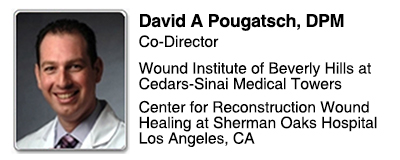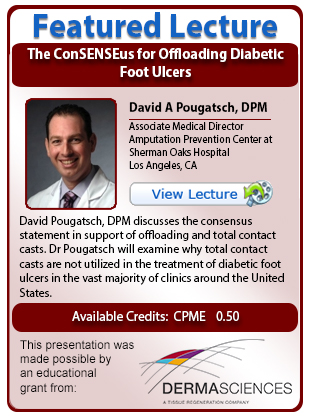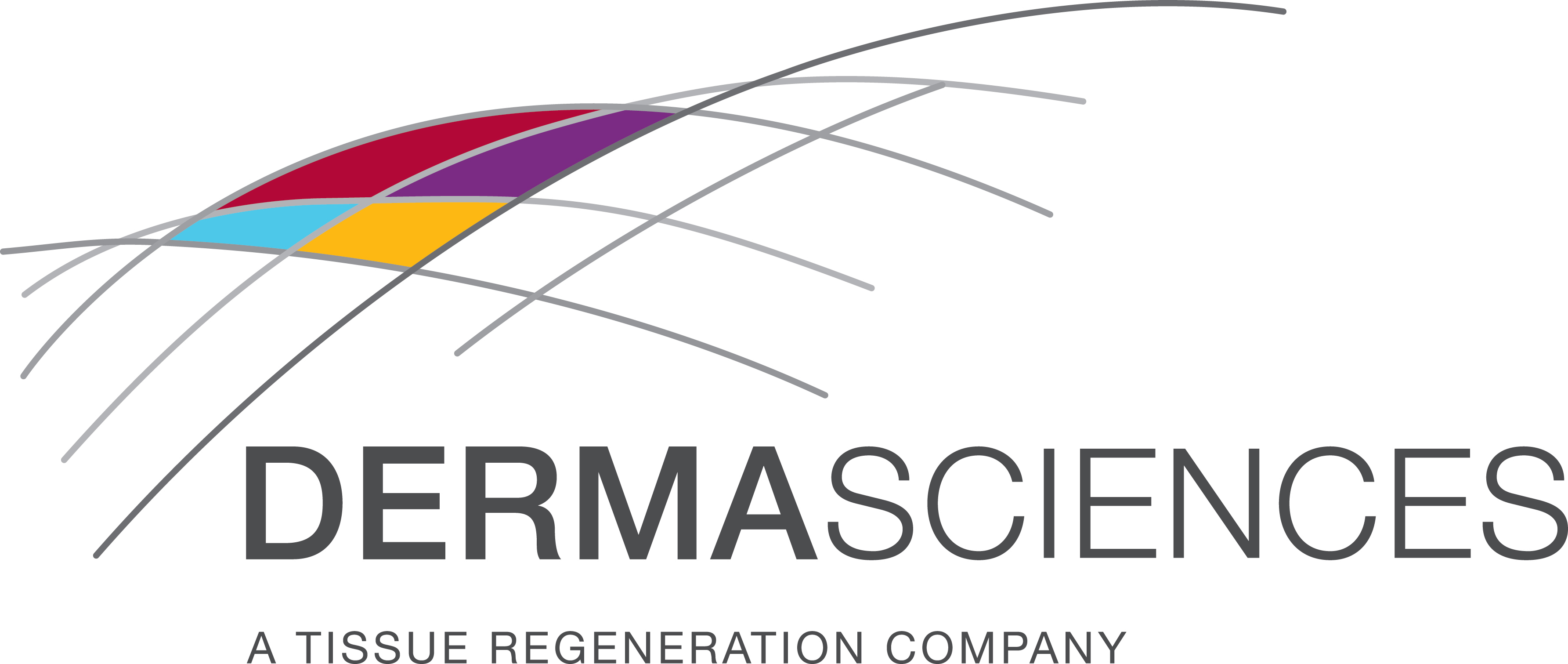|
|
|
|
TCC-EZ® Total Contact Casting System Puts the Gold Standard of Offloading in Every Podiatrist’s Toolbox
|
|
|
|
|
Diabetic foot ulcers (DFUs) are an increasing problem in the United States and the world. With diabetic patients suffering a five-year mortality rate of 50% after undergoing a lower extremity amputation due to complications of diabetes, achieving closure in DFUs is not just a limb-saving necessity, but also life-saving. With many modalities available to the clinician to offload diabetic foot ulcers, it has become increasingly difficult to decide on what to use to achieve this goal of wound closure with proven results. Clinical and scientific studies have routinely shown that the use of total contact casting (TCC) is the gold standard in offloading DFUs, providing the greatest reduction in plantar peak pressures along with increased patient compliance.
Criteria for total contact casting include most DFUs that clinicians see on a daily basis, such as non-abscessed DFUs in those with an adequate vascular supply, pre-ulcerative lesions, and Charcot foot deformities. In cases with acute infection with drainage, it is suggested to adequately treat the infection and drainage prior to commencing treatment with total contact casting. Casting patients with allergies to the cast material is an absolute contraindication.
|
|
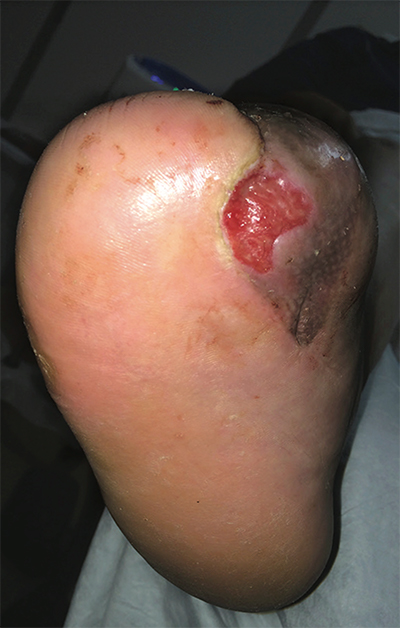
53-year-old obese male with history of type 2 diabetes and right foot TMA presented with breakdown of skin graft site.
|
|
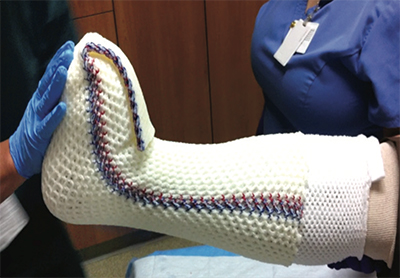
TCC-EZ® applied weekly.
|
|
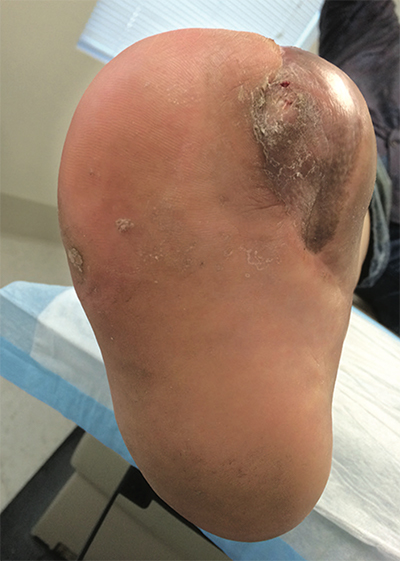
Healed at 4 weeks.
|
|
|
The use of TCC for healing DFUs is supported by multiple randomized controlled trials, meta-analyses papers, and consensus documents.1-6 The latest multi-disciplinary consensus document on off-loading DFUs, released in 2014, concluded that total contact casting was the preferred method for effective pressure relief, and the likelihood of healing is increased with off-loading adherence.7 Additional evidence consistently shows that when off-loading is integrated into the patient encounter and provided at each visit, the likelihood of DFU healing increases and complications decrease. Armstrong’s 2001 randomized control trial displayed an effective healing rate at 89.5% within 12 weeks utilizing a TCC.1 Lavery’s randomized trial between TCC, healing shoes, and removable boots resulted in a significantly higher proportion of patients healing in the TCC group versus the removable walkers at 12 weeks (69.6% versus 22.2%) and faster healing rates (5.4 weeks versus 8.9 weeks).8
|
|
“Advanced therapeutics are unlikely to succeed in improving wound-healing outcomes unless effective off-loading is achieved.”
|
|
|
The consensus concluded that there currently exists a gap between the evidence supporting the efficacy of DFU off-loading and what is performed in clinical practice. More importantly, especially with the use of the various graft substitutes in today’s wound care practice, the panel stated that advanced therapeutics are unlikely to succeed in improving wound-healing outcomes unless effective off-loading is achieved.
|
|
|
|
|
Unfortunately, with the abundance of evidence in the medical literature supporting the use of TCCs, it is not necessarily translated into common practice. A five-year retrospective analysis of multiple wound care centers throughout the United States (over 25,000 patients) showed that only 3.7% of DFUs that are eligible to have a TCC applied, are actually casted. Given the advances in total contact casting application as seen with the TCC-EZ® kit, including an application time of less than 10 minutes, using a total contact cast to appropriately offload a DFU should dominate the therapeutic choices made by wound care physicians.
|
|
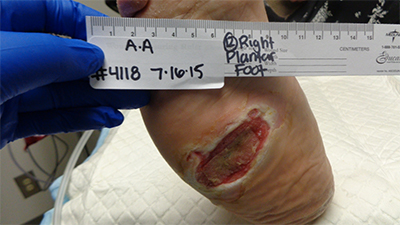
77-year-old obese female with history of type 2 diabetes and Charcot midfoot deformity. TCC-EZ® was applied weekly.
|
|
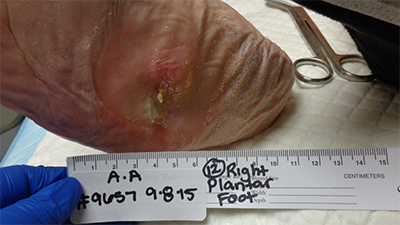
Healed at 7.5 weeks.
|
|
|
Traditional total contact casting methods, though effective, are time consuming and have increased variability among applications. Traditional bulky casts also add weight to the extremity, making it difficult for the patient to ambulate safely in the cast. The pre-packaged system, like the TCC-EZ®, is an easy-to-use off-the-shelf product which consists of a one-piece, roll-on, woven design cast that simplifies the application process while reducing the potential for causing additional tissue damage. All supplies including foam dressings and adequate cast padding are included within the kit. The TCC-EZ® kits can be stored at room temperature and come with a walking boot that specifically fits the TCC-EZ® cast.
With outcomes comparable or better than traditional casting, the pre-packaged TCC-EZ® total contact casting system leads to healing DFUs in a timely manner by increasing patient compliance, reducing signs of infection, and lowering the potential amputation rate by over 50% compared to DFUs not treated with TCC.
|
|
###
-
Armstrong DG, Nguyen HC, Lavery LA, et al: Off-loading the diabetic foot wound: a randomized clinical trial. Diabetes Care. 2001;24:1019-1022.
-
American Diabetes Association: Consensus Development Conference on Diabetic Foot Wound Care. Diabetes Care. 1999;22:1354-1360.
-
Mueller MJ, Diamond JE, Sinacore DR, Delitto A, Blair VPD, Drury DA, Rose SJ. Total contact casting in treatment of diabetic plantar ulcers: controlled clinical trial. Diabetes Care. 1989 Jun;12:384-388.
-
Lewis J, Lipp A. Pressure-relieving interventions for treating diabetic foot ulcers. Cochrane Database of Systematic Reviews. 2013, Issue 1 Art. No.: CD002302. DOI: 10.1002/14651858.CD002302.pub2.
-
Caravaggi C, et al. Effectiveness and safety of a nonremovable fiberglass off-bearing cast versus a therapeutic shoe in the treatment of neuropathic foot ulcers. Diabetes Care. 2000 Dec;23:1746-1751.
-
Armstrong DG, Lavery LA, Wu S, Boulton AJM. Evaluation of removable and irremovable cast walkers in the healing of diabetic foot wounds. Diabetes Care. 2005 Mar;28:551-554, 2005.
-
Snyder RJ, Frykberg RG, Rogers LC, et al. The Management of Diabetic Foot Ulcers Through Optimal Off-Loading. J Am Podiatr Med Assoc. Nov;104(6):555-567.
-
Lavery LA, Higgins KR, La Fontaine J, et al. Randomised clinical trial to compare total contact casts, healing sandals, and a shear-reducing removable boot to heal diabetic foot ulcers. Int Wound J. 2015 Dec;12(6):710-715. doi: 10.1111/iwj.12213. Epub 2014 Feb 21.
|
|
This ezine was supported by an educational Grant from:
|
|
This email was sent to: %%Email Address%%
This email was sent by: %%Member_Busname%%
%%Member_Addr%% %%Member_City%%, %%Member_State%% %%Member_PostalCode%% %%Member_Country%%
We respect your right to privacy - view our policy
Unsubscribe
Update Profile
|
|

